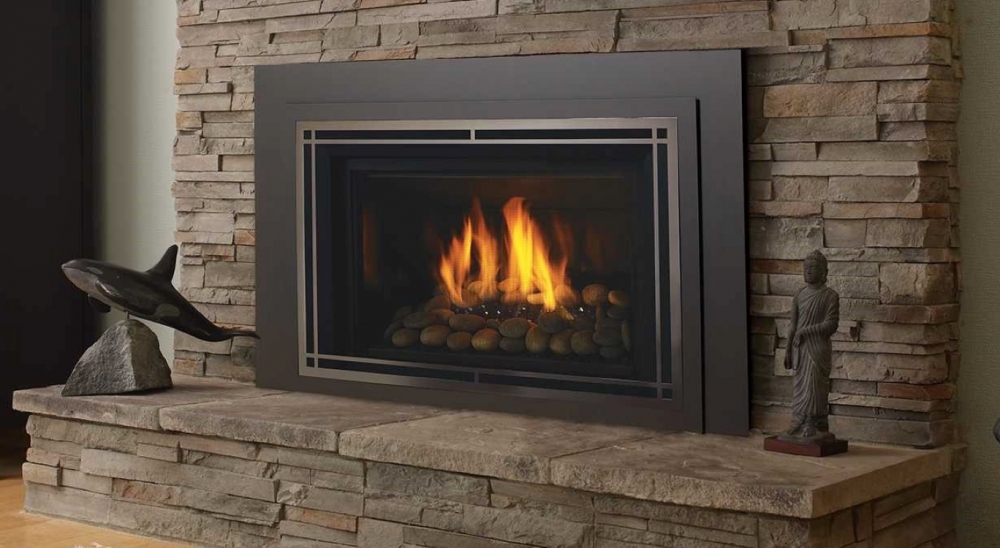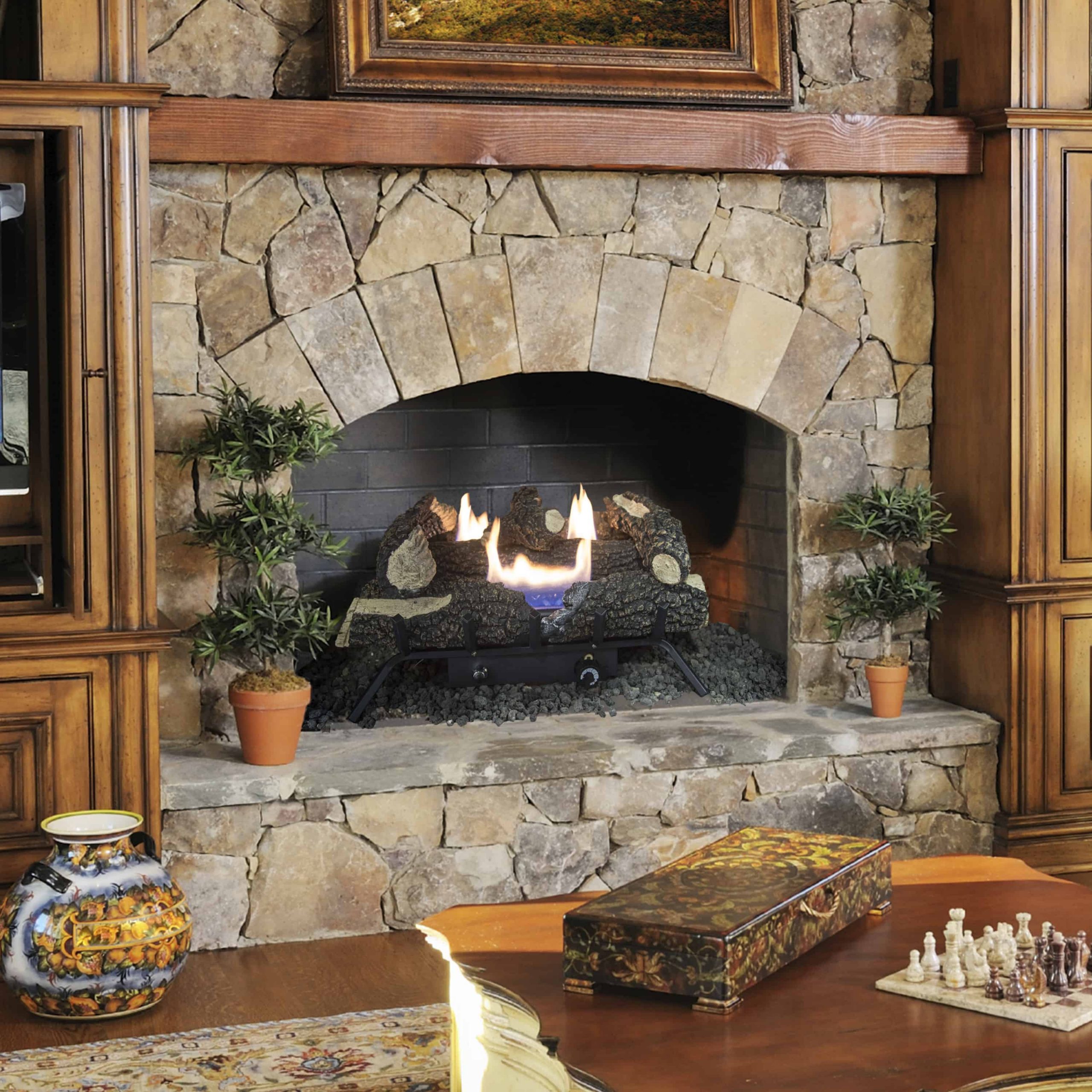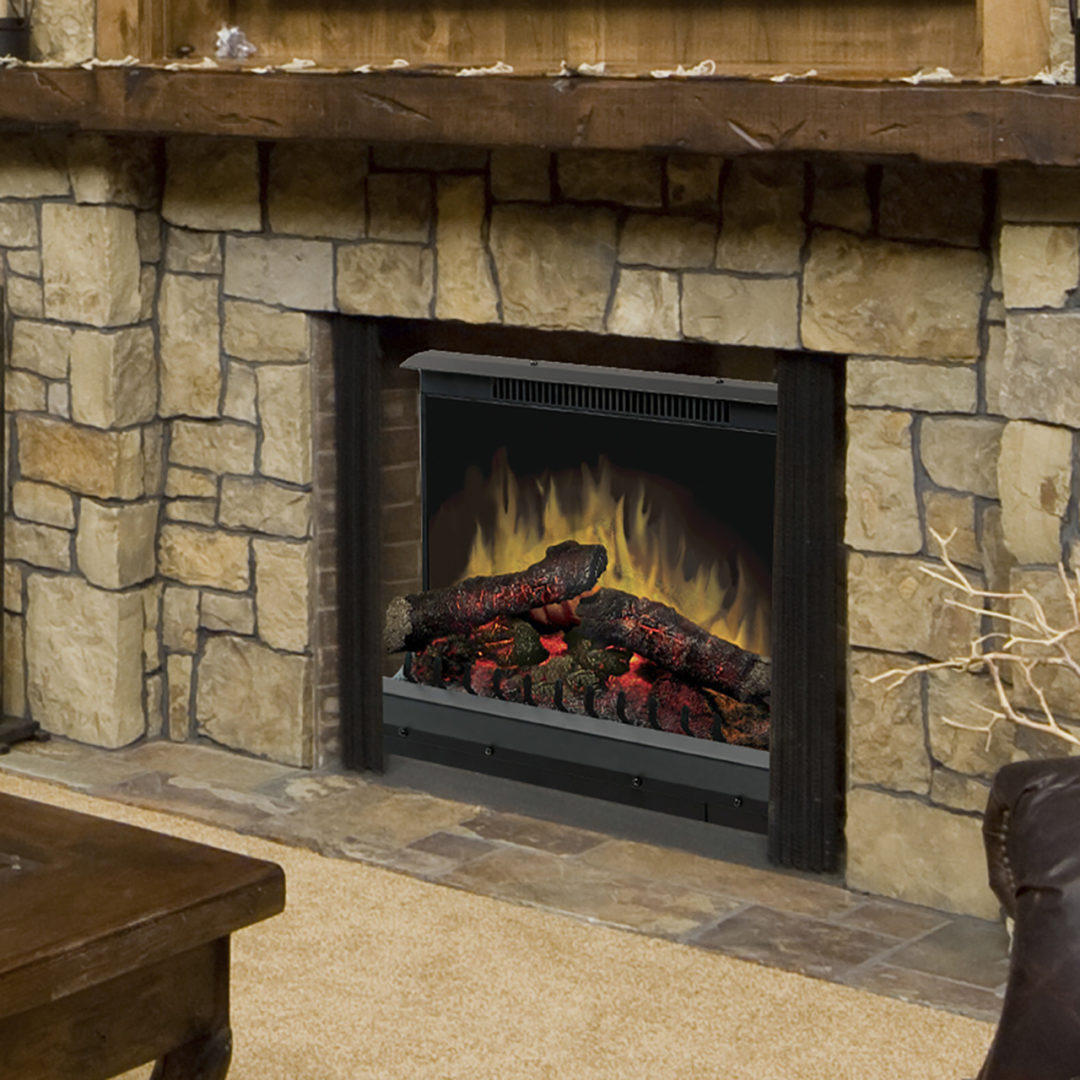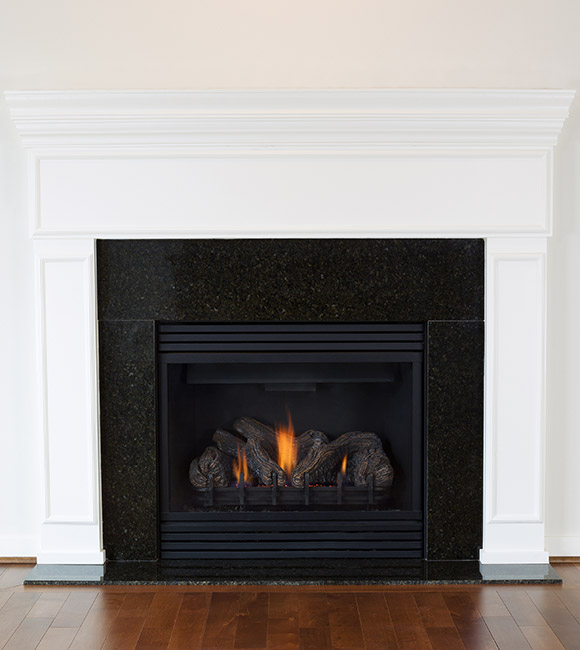Gas Log Insert for Existing Fireplace
A gas log insert is an excellent solution for homeowners who want to upgrade their traditional wood-burning fireplace with a cleaner, more convenient heating option. This insert fits into an existing fireplace and replicates the look of natural wood logs but with the efficiency and ease of gas-powered heating. Let’s discuss different aspects of installing a gas log insert for your fireplace, covering everything from types and benefits to installation and maintenance.

What Is a Gas Log Insert?
A gas log insert is a specially designed unit that fits into an existing wood-burning fireplace to simulate the look of real logs while using natural gas or propane as the fuel source. It offers homeowners the aesthetics of a traditional fireplace without the hassle of gathering wood, cleaning ashes, or dealing with smoke. These inserts are available in various sizes and styles, making them a popular choice for many households.
Gas log inserts typically consist of ceramic logs or refractory cement logs designed to withstand high temperatures. These logs are arranged to mimic the appearance of burning wood, complete with glowing embers and flame patterns. The system includes a burner unit and sometimes a grate, both designed to fit snugly within the existing fireplace space.
Homeowners can choose between two types of inserts: vented and vent-free. Vented inserts require an operational chimney to expel gases, whereas vent-free models burn more efficiently, emitting minimal pollutants and offering higher heat retention. Understanding these differences will help you select the ideal insert for your fireplace.

Types of Gas Log Inserts: Vented vs. Vent-Free
When choosing a gas log insert, it’s essential to understand the differences between vented and vent-free models, as both have unique benefits and considerations.
Vented gas log inserts are designed to work with an existing chimney or vent system. They offer a realistic flame pattern, closely resembling a wood-burning fire. However, a significant amount of heat escapes through the chimney, making vented inserts more for ambiance than heating. These models are ideal if you prioritize aesthetics and already have a functional chimney in place.
Vent-free gas log inserts are a more efficient option since they do not require a chimney to operate. They burn gas cleanly, producing minimal emissions while releasing most of the heat into the room. Vent-free models are an excellent choice for homeowners who want both warmth and convenience, though some jurisdictions may restrict their use due to indoor air quality concerns. It’s important to check local building codes to ensure compliance.
Both types come with various control options, such as manual valves, wall switches, or remote controls, making them easy to operate. Your choice will ultimately depend on whether you prioritize the authentic feel of a vented fire or the efficiency and warmth of a vent-free option.
/ScreenShot2018-06-28at11.08.16AM-5b34fa02c9e77c00372da939.png)
Benefits of Gas Log Inserts for Existing Fireplaces
Installing a gas log insert in your existing fireplace offers several significant benefits. One of the primary advantages is convenience. With a gas log insert, there’s no need to chop wood, stoke flames, or clean out ash and soot. With the push of a button or flip of a switch, you can enjoy a cozy fire instantly, making it perfect for busy households.
Another benefit is improved energy efficiency. Vent-free models, in particular, offer high heat output, allowing you to warm your home without relying heavily on your central heating system. Even vented models, while less efficient, can provide supplemental heating and create a cozy atmosphere on chilly nights.
Additionally, gas log inserts are eco-friendlier than wood-burning fireplaces. They produce fewer emissions and do not contribute to indoor air pollution from burning wood. Some models also come with oxygen depletion sensors, ensuring that the unit shuts off if oxygen levels in the room fall too low, further enhancing safety.

Installation Process: Steps and Considerations
Installing a gas log insert in your existing fireplace requires careful planning to ensure proper fit and function. While some handy homeowners may attempt a DIY installation, hiring a professional is generally recommended to guarantee safety and compliance with building codes.
The first step is to measure the fireplace opening accurately to ensure the insert fits properly. Gas log inserts are available in various sizes, so it’s essential to choose a model that matches the dimensions of your fireplace. Additionally, you’ll need to determine whether your fireplace is suitable for vented or vent-free logs based on the availability and condition of your chimney.
Next, you’ll need to connect the gas line. A licensed plumber or gas technician should handle this step to ensure a secure and leak-free installation. In some cases, the gas line may need to be extended or rerouted, which adds to the installation cost.
Finally, the insert is installed, the burner is positioned, and the logs are arranged according to the manufacturer’s instructions. Once installed, the technician will test the system to ensure the flames are even and the gas flow is functioning correctly. Proper ventilation will also be checked, especially for vented models, to ensure the chimney is clear and functioning properly.

Maintenance and Safety Tips for Gas Log Inserts
Like any heating appliance, gas log inserts require regular maintenance to ensure safe and efficient operation. Although they are relatively low-maintenance compared to wood-burning fireplaces, a few tasks will help keep them in optimal condition.
Annual inspections are recommended to check for any gas leaks, burner malfunctions, or debris accumulation in vented systems. Hiring a professional technician to inspect your insert at least once a year ensures that all components are working correctly and helps identify potential issues before they become major problems.
Cleaning the logs and burner regularly will prevent soot buildup and ensure the insert maintains a realistic appearance. Although gas logs don’t produce ash, dust, and debris can accumulate over time. Using a soft brush or cloth to wipe down the logs and burner can help maintain their appearance and functionality.
Safety is a top priority when using gas appliances. Always ensure the carbon monoxide detectors in your home are functioning properly. Additionally, make sure the gas shut-off valve is easily accessible in case of emergencies. For vent-free models, good ventilation is essential, so be mindful of room size and airflow when using the insert for extended periods.

Choosing the Right Gas Log Insert for Your Home
Selecting the right gas log insert for your existing fireplace depends on a few key factors, including size, type, and design. Start by measuring the dimensions of your fireplace opening to ensure a proper fit. You’ll also need to decide between vented and vent-free models based on your heating needs, local codes, and chimney availability.
The fuel type is another consideration—most gas log inserts are compatible with either natural gas or propane. If your home already has a natural gas line, this is the most convenient option. However, propane may be a better choice for homes in rural areas without natural gas access.
Lastly, consider the aesthetic and control options. Gas log inserts come in a variety of styles, from rustic charred oak designs to sleek modern log sets. Some models feature glowing ember beds and realistic flame patterns for added ambiance. Control options include manual, wall switch, and remote control, allowing you to choose the level of convenience that best suits your lifestyle.

A gas log insert for your existing fireplace offers the perfect blend of style, convenience, and efficiency. Whether you choose a vented model for its realistic flame or a vent-free option for maximum heat output, these inserts provide a hassle-free way to enjoy the charm of a fireplace. With minimal maintenance and easy operation, gas log inserts are an excellent investment that can enhance the comfort and ambiance of your home.
By carefully considering your needs, measuring your space, and following proper installation guidelines, you can upgrade your fireplace with confidence. Whether you want to reduce heating costs, minimize maintenance, or simply create a cozy atmosphere, a gas log insert is a practical and stylish solution for any home.

Inserts are complete units that fit into existing wood burning fireplaces. They require no

Best Gas Log Set For Existing Fireplace Reporterize

Dimplex Deluxe 23″ Log Set Electric Fireplace Insert: DFI2310

Gas fireplace logs, Wood burning fireplace inserts, Fireplace logs

ChimneyTEK Gas Inserts & Logs for Sale in Baltimore, MD

Gas Log Fireplace Inserts Ideas – Logo collection for you

Related Posts:
- Black Fireplace Insert
- Linear Fireplace Insert
- Fireplace Insert Blower Motor
- Wood Burning Fireplace Insert Grate
- Fireplace Insert Kit
- Gas Fireplace Inserts Delaware
- Fireplace Insert Faceplate
- Fireplace Insert Cover
- Electric Fireplace Insert Stone
- Wood Stove Fireplace Inserts
Gas log inserts are a popular choice for homeowners looking to add the warmth and ambiance of a traditional fireplace to their existing home. These inserts offer the convenience of gas-powered heating, making it easy to enjoy a cozy fire without the hassle of traditional wood-burning fireplaces. In this guide, we will explore the benefits, pros and cons, common mistakes to avoid, and frequently asked questions related to gas log inserts for existing fireplaces.
Benefits of Gas Log Inserts
One of the primary benefits of gas log inserts is their convenience. Unlike wood-burning fireplaces, gas log inserts can be easily turned on and off with the flip of a switch or a push of a button. This makes it easy to enjoy a fire whenever you want, without the need for storing and hauling firewood or dealing with messy ashes.
In addition to convenience, gas log inserts are also energy-efficient. They provide consistent heat output, helping to warm your home more efficiently than traditional wood-burning fireplaces. Some models even come with features such as thermostats and remote controls, allowing you to easily control the temperature in your living space.
Another benefit of gas log inserts is their low maintenance requirements. Unlike wood-burning fireplaces, which require regular cleaning and maintenance to prevent creosote buildup and chimney fires, gas log inserts are clean burning and produce minimal smoke and ash. This makes them easier to maintain and keep clean over time.
Finally, gas log inserts are a versatile option for homeowners looking to add a fireplace to their existing home. They come in a variety of sizes and styles, making it easy to find an insert that complements your existing decor and fits seamlessly into your living space.
Pros and Cons of Gas Log Inserts
While gas log inserts offer many benefits, there are also some drawbacks to consider. One potential downside is the cost of installation. Gas log inserts can be more expensive upfront than traditional wood-burning fireplaces, especially if you need to install a gas line or make other modifications to your existing fireplace.
Another potential con of gas log inserts is their reliance on fossil fuels. While natural gas is a cleaner-burning fuel than wood, it still produces carbon emissions when burned. If you are concerned about environmental impact, you may want to consider alternative heating options such as electric or ethanol fireplaces.
Despite these drawbacks, many homeowners find that the benefits of gas log inserts outweigh the drawbacks. They provide convenient heat and ambiance without the mess and maintenance requirements of traditional wood-burning fireplaces.
Common Mistakes to Avoid
When installing a gas log insert for your existing fireplace, there are several common mistakes to avoid. One common mistake is failing to properly size your insert. It’s important to choose an insert that fits snugly into your existing fireplace opening to prevent drafts and maximize heat output.
Another common mistake is neglecting regular maintenance. Gas log inserts should be inspected annually by a professional technician to ensure safe operation and prevent issues such as leaks or blockages.
It’s also important to follow manufacturer recommendations for the proper use and maintenance of your gas log insert. This includes using the correct type of fuel, keeping vents clear, and following safety guidelines for operation.
Finally, be sure to hire a qualified professional for the installation and maintenance of your gas log insert. Improper installation can lead to safety hazards such as leaks or carbon monoxide poisoning.
Can I convert my existing wood-burning fireplace to a gas log insert?
Yes, many homeowners choose to convert their existing wood-burning fireplace to a gas log insert for added convenience and efficiency. A qualified professional can help you determine if this is feasible for your specific setup.
Are gas log inserts safe?
When installed and maintained properly, gas log inserts are safe for use in your home. It’s important to follow manufacturer guidelines for operation and have your insert inspected annually by a professional technician.
Do gas log inserts require a chimney?
Gas log inserts do not require a chimney like traditional wood-burning fireplaces do. Instead, they can be vented directly through an exterior wall or roof using a vent pipe.
How long do gas logs last?
The lifespan of gas logs can vary depending on usage and maintenance practices. With proper care, gas logs can last several years before needing replacement.
Are there different types of gas logs available?
Yes, there are various types of gas logs available, including vented and ventless options as well as different materials such as ceramic fiber or refractory cement logs.
Gas log inserts offer homeowners a convenient and efficient way to enjoy the warmth and ambiance of a traditional fireplace in their existing home. By weighing the benefits and drawbacks, avoiding common mistakes during installation and maintenance, and understanding how they work through frequently asked questions outlined in this guide, you can make an informed decision about whether a gas log insert is right for you. Ultimately, gas log inserts can be a great option for homeowners looking to upgrade their existing fireplaces. With their convenience, energy efficiency, low maintenance requirements, and versatile style options, they provide a modern and practical alternative to traditional wood-burning fireplaces. By taking the necessary precautions and following safety guidelines, you can enjoy the comfort and beauty of a gas log insert for years to come. If you are considering installing a gas log insert for your existing fireplace, be sure to consult with a qualified professional to ensure proper installation and maintenance. By following safety guidelines, choosing the right size and style of insert, and understanding how they work, you can enjoy the benefits of a gas log insert for many years. With their convenience, energy efficiency, and low maintenance requirements, gas log inserts are a great option for homeowners looking to enhance their living space with the warmth and ambiance of a fireplace. Overall, gas log inserts offer a convenient and efficient way to enjoy the benefits of a traditional fireplace in your home. By understanding the benefits, pros and cons, common mistakes to avoid, and frequently asked questions outlined in this guide, you can make an informed decision about whether a gas log insert is right for you. With proper installation, maintenance, and care, a gas log insert can enhance the comfort and beauty of your living space for years to come. Consider consulting with a qualified professional to ensure a safe and successful installation of your gas log insert.